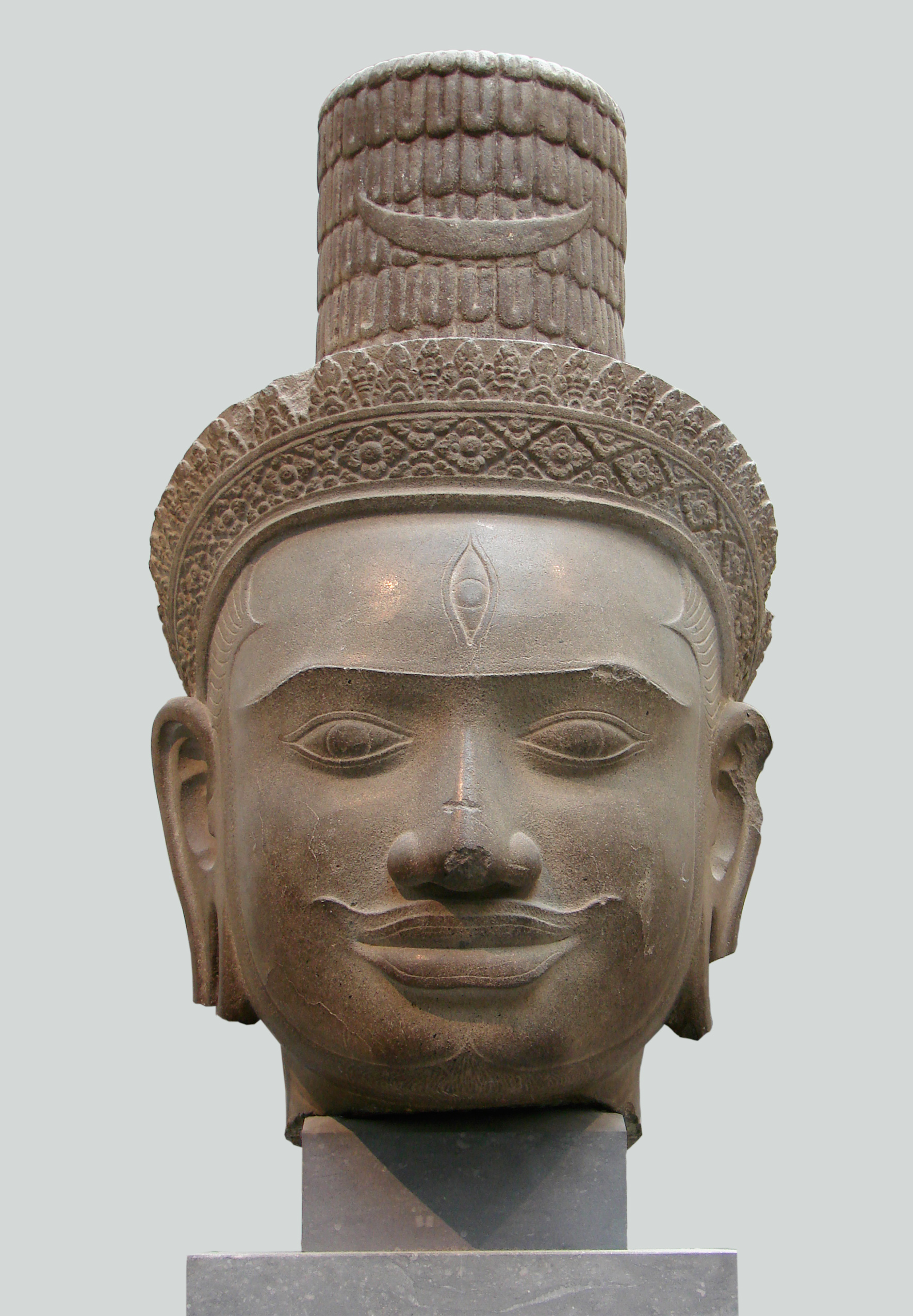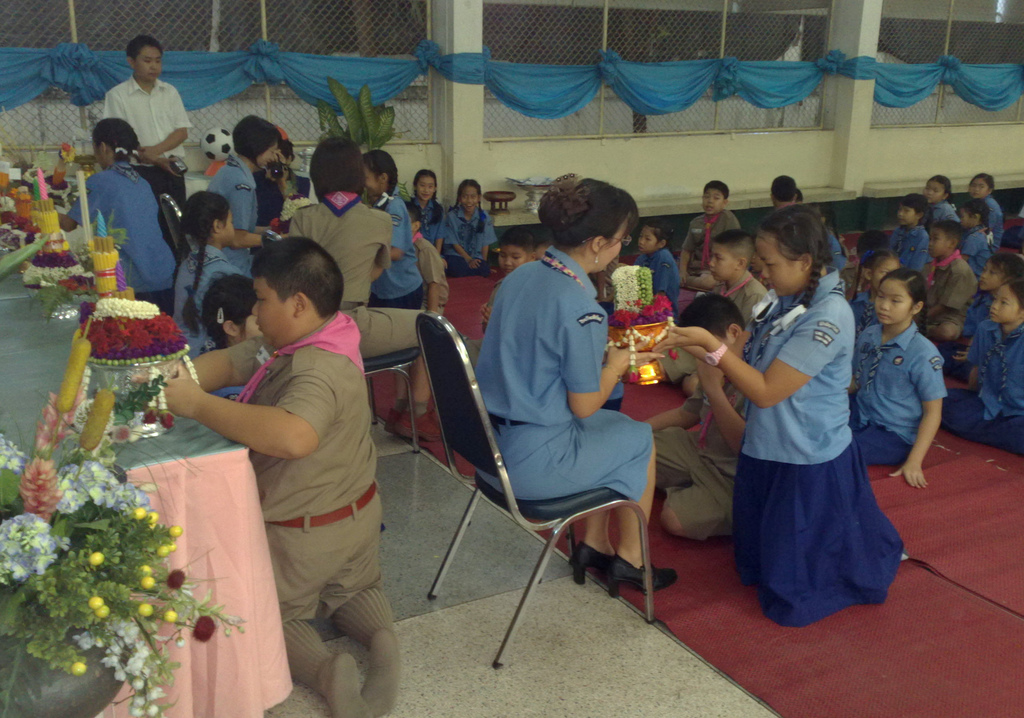|
Unalome
Yantra tattooing or Sak Yant ( th, สักยันต์ ) is a form of tattooing using Indian yantra designs. It consists of sacred geometrical, animal and deity designs accompanied by Pali phrases that are said to offer power, protection, fortune, charisma and other benefits for the bearer. History Tattoos believed to offer protection and other benefits have been recorded everywhere throughout both mainland Southeast Asia and as far south as Indonesia and the Philippines. Over the centuries the tradition spread to what is now Cambodia, Laos, Thailand, and parts of Myanmar.Cummings, Joe, (2011) ''Sacred Tattoos of Thailand: Exploring the Magic, Masters and Mystery of Sak Yan'', Marshall Cavendish. While the tradition itself originates with indigenous tribal animism, it became closely tied to the Hindu-Buddhist concept of yantra or mystical geometric patterns used during meditation. Tattoos of yantra designs were believed to hold magic power, and were used much like the kolam t ... [...More Info...] [...Related Items...] OR: [Wikipedia] [Google] [Baidu] |
Urna
In Buddhist art and culture, the Urna (more correctly ūrṇā or ūrṇākośa (Pāli uṇṇa), and known as in Chinese) is a spiral or circular dot placed on the forehead of Buddhist images as an auspicious mark. It symbolizes a third eye, which in turn symbolizes vision into the divine world; a sort of ability to see past our mundane universe of suffering. As set out in the '' Lakkhana Sutta'' or 'Discourse on Marks', the ūrṇā is the thirty-first physical characteristic of Buddha. It is generally thought to be a whorl of hair and be a mark or sign of the Buddha as a mahāpuruṣa or great being. The device is often seen on sculptures from the 2nd century CE. Gallery File:Buddha Victoria & Albert.jpg, Buddha with urna depicted as a circular dot File:Khmer Sacred Symbol, Om or Unalom.png, The unalome () yantra is a stylised representation of the urna. See also * Bindi (decoration) * Bindu (symbol) * Yantra tattooing Yantra tattooing or Sak Yant ( th, สักยั ... [...More Info...] [...Related Items...] OR: [Wikipedia] [Google] [Baidu] |
Tai Lü Language
Tai Lue (Tai Lü: , ''kam tai lue'', , Tai Tham: ) or Tai Lɯ, Tai Lü, Thai Lue, Tai Le, Xishuangbanna Dai (; my, လူးရှမ်း, luu Shan; lo, ພາສາໄຕລື້; th, ภาษาไทลื้อ, ''phasa thai lue'', ; vi, tiếng Lự or ), is a Tai language of the Lu people, spoken by about 700,000 people in Southeast Asia. This includes 280,000 people in China (Yunnan), 200,000 in Burma, 134,000 in Laos, 83,000 in Thailand and 4,960 in Vietnam. The language is similar to other Tai languages and is closely related to Kham Mueang or Tai Yuan, which is also known as Northern Thai language. In Yunnan, it is spoken in all of Xishuangbanna Dai Autonomous Prefecture, as well as Jiangcheng Hani and Yi Autonomous County in Pu'er City. In Vietnam, Tai Lue speakers are officially recognised as the Lự ethnic minority, although in China they are classified as part of the Dai people, along with speakers of the other Tai languages apart from Zhuang. Phonology ... [...More Info...] [...Related Items...] OR: [Wikipedia] [Google] [Baidu] |
Thai Script
The Thai script ( th, อักษรไทย, ) is the abugida used to write Thai, Southern Thai and many other languages spoken in Thailand. The Thai alphabet itself (as used to write Thai) has 44 consonant symbols ( th, พยัญชนะ, ''phayanchana''), 16 vowel symbols ( th, สระ, ''sara'') that combine into at least 32 vowel forms and four tone diacritics ( th, วรรณยุกต์ or วรรณยุต, or ) to create characters mostly representing syllables. Although commonly referred to as the "Thai alphabet", the script is in fact not a true alphabet but an abugida, a writing system in which the full characters represent consonants with diacritical marks for vowels; the absence of a vowel diacritic gives an implied 'a' or 'o'. Consonants are written horizontally from left to right, and vowels following a consonant in speech are written above, below, to the left or to the right of it, or a combination of those. History The Thai alphabet is deri ... [...More Info...] [...Related Items...] OR: [Wikipedia] [Google] [Baidu] |
Nirvana
( , , ; sa, निर्वाण} ''nirvāṇa'' ; Pali: ''nibbāna''; Prakrit: ''ṇivvāṇa''; literally, "blown out", as in an oil lampRichard Gombrich, ''Theravada Buddhism: A Social History from Ancient Benāres to Modern Colombo.'' Routledge) is a concept in Indian religions (Buddhism, Hinduism, Jainism, and Sikhism) that represents the ultimate state of soteriological release, the liberation from duḥkha and '' saṃsāra''. In Indian religions, nirvana is synonymous with ''moksha'' and ''mukti''. All Indian religions assert it to be a state of perfect quietude, freedom, highest happiness as well as the liberation from attachment and worldly suffering and the ending of ''samsara'', the round of existence.Gavin Flood, ''Nirvana''. In: John Bowker (ed.), '' Oxford Dictionary of World Religions'' However, non-Buddhist and Buddhist traditions describe these terms for liberation differently. In Hindu philosophy, it is the union of or the realization of the identity of ... [...More Info...] [...Related Items...] OR: [Wikipedia] [Google] [Baidu] |
Third Eye
The third eye (also called the mind's eye or inner eye) is a mystical invisible eye, usually depicted as located on the forehead, which provides perception beyond ordinary sight. In Hinduism, the third eye refers to the ajna (or brow) chakra. In both Hinduism and Buddhism, the third eye is said to be located around the middle of the forehead, slightly above the junction of the eyebrows, representing the enlightenment one achieves through meditation. The third eye refers to the gate that leads to the inner realms and spaces of higher consciousness. In spirituality, the third eye often symbolizes a state of enlightenment. The third eye is often associated with religious visions, clairvoyance, the ability to observe chakras and auras,. precognition, and out-of-body experiences. People who are said to have the capacity to use their third eyes are sometimes known as ''seers''. In Hinduism In Hinduism, the third eye refers to the ajna (or brow) chakra, said to be located around t ... [...More Info...] [...Related Items...] OR: [Wikipedia] [Google] [Baidu] |
Thai Om Symbol
Thai or THAI may refer to: * Of or from Thailand, a country in Southeast Asia ** Thai people, the dominant ethnic group of Thailand ** Thai language, a Tai-Kadai language spoken mainly in and around Thailand *** Thai script *** Thai (Unicode block) People with the name * Thai (surname), a Vietnamese version of Cai, including a list of people with the name * Thai Lee (born 1958), an American businesswoman * Thai Nguyen, US-based Vietnamese fashion designer and television personality Other uses * Thai (cannabis), a name for the drug * Thai Airways, the national airline of Thailand * Thai cat, a breed of cat * Thai, a month in the Tamil calendar * Toe to Heel Air Injection (THAI), a method of extracting oil from oil sands See also * * Dai (other) * Tai (other) * Tay (other) * Thais (other) * Thay (other) * Tie (other) * Siam (other) * Tai peoples or Thai peoples, the ethnic groups of southern China and Southeast As ... [...More Info...] [...Related Items...] OR: [Wikipedia] [Google] [Baidu] |
Khmer Sacred Symbol, Om Or Unalom
Khmer(s) may refer to: Cambodia *''Srok Khmer'' (lit. "Khmer land" or "Land of the Khmer(s)"), a colloquial exonym used to refer to Cambodia by Cambodians; see * *Khmer people, the ethnic group to which the great majority of Cambodians belong **Khmer Americans, Americans of Khmer (Cambodian) ancestry **Khmer Krom, Khmer people living in the Mekong Delta and Southeast Vietnam **Khmer Loeu, the Mon-Khmer highland tribes in Cambodia **Northern Khmer people, ethnic Khmer people of Northeast Thailand *Khmer (Unicode block), a block of Unicode characters of the Khmer script *Khmer architecture, the architecture of Cambodia *Khmer cuisine, the dominant cuisine in Cambodia * Khmer Empire, which ruled much of Indochina from the 9th to the 13th centuries *Khmer Issarak, anti-French, Khmer nationalist political movement formed in 1945 *Khmer language, the language of the Khmers, also the official and national language of Cambodia **Khmer Khe dialect, a Khmeric language spoken in Stung Treng ... [...More Info...] [...Related Items...] OR: [Wikipedia] [Google] [Baidu] |
Angelina Jolie
Angelina Jolie (; born Angelina Jolie Voight; June 4, 1975) is an American actress, filmmaker, humanitarian and former Special Envoy to the UN High Commissioner for Refugees. The recipient of numerous accolades, including an Academy Award and three Golden Globe Awards, she has been named Hollywood's highest-paid actress multiple times. Jolie made her screen debut as a child alongside her father, Jon Voight, in ''Lookin' to Get Out'' (1982), and her film career began in earnest a decade later with the low-budget production ''Cyborg 2'' (1993), followed by her first leading role in a major film, ''Hackers'' (1995). She starred in the critically acclaimed biographical cable films '' George Wallace'' (1997) and ''Gia'' (1998), and won an Academy Award for Best Supporting Actress for her performance in the 1999 drama '' Girl, Interrupted''. Her starring role as the titular video game heroine in '' Lara Croft: Tomb Raider'' (2001) established her as a leading Hollywood actress ... [...More Info...] [...Related Items...] OR: [Wikipedia] [Google] [Baidu] |
Wat Bang Phra
Wat Bang Phra ( th, วัดบางพระ) is a Buddhist monastery (wat) in Nakhon Chaisi district, Nakhon Pathom Province, Thailand, about 50 km west of Bangkok. Wat Bang Phra translates into English as the "Monastery of the Riverbank Buddha Image," a reference to the temple's history as a spot where a revered Buddha image from Ayuthaya was recovered from a boat which sank in the Nakhon Chaisi River alongside where the monastery was founded.Cummings, Joe, ''Sacred Tattoos of Thailand: Exploring the Magic, Masters and Mystery of Sak Yan'', Marshall Cavendish, 2015. History Wat Bang Phra dates to the late 18th century, just before the second fall of Ayutthaya. A small, elegant ordination chapel represents the only significant remains of the original monastery today. Inside sit two Buddha images, Luang Pho Sit Chaiyamongkon and Luang Pho Kai Sitmongkhon, which, according to legend, were being transported downriver from Ayutthaya to save them from plundering Burmese troops ... [...More Info...] [...Related Items...] OR: [Wikipedia] [Google] [Baidu] |
Wai Khru
The ''wai khru'' ceremony ( th, พิธีไหว้ครู, pronounced ) is a Thai ritual in which students pay respects to teachers in order to express their gratitude and formalize the student–teacher relationship. It is regularly held near the beginning of the school year in most schools in Thailand. ''Wai khru'' has long been an important rite in the traditional martial and performing arts, as well as in astrology, Thai Massage and other traditional arts; students and performers of Muay Thai and Krabi Krabong, as well as Thai dance and classical music, will usually perform a ''wai khru'' ritual at their initiation as well as before performances to pay respect and homage to both their teachers and the deities who patronize their arts. History The rituals of ''wai khru'' are believed to have derived from ancient animistic beliefs, influenced by the spread of Brahminism from India. This is evident in the ''wai khru'' ceremonies of traditional dance and music, where spec ... [...More Info...] [...Related Items...] OR: [Wikipedia] [Google] [Baidu] |
Southeast Asia
Southeast Asia, also spelled South East Asia and South-East Asia, and also known as Southeastern Asia, South-eastern Asia or SEA, is the geographical United Nations geoscheme for Asia#South-eastern Asia, south-eastern region of Asia, consisting of the regions that are situated south of mainland China, east of the Indian subcontinent, and north-west of mainland Australia. Southeast Asia is bordered to the north by East Asia, to the west by South Asia and the Bay of Bengal, to the east by Oceania and the Pacific Ocean, and to the south by Australia (continent), Australia and the Indian Ocean. Apart from the British Indian Ocean Territory and two out of atolls of Maldives, 26 atolls of Maldives in South Asia, Maritime Southeast Asia is the only other subregion of Asia that lies partly within the Southern Hemisphere. Mainland Southeast Asia is completely in the Northern Hemisphere. East Timor and the southern portion of Indonesia are the only parts that are south of the Equator. Th ... [...More Info...] [...Related Items...] OR: [Wikipedia] [Google] [Baidu] |

.jpg)




